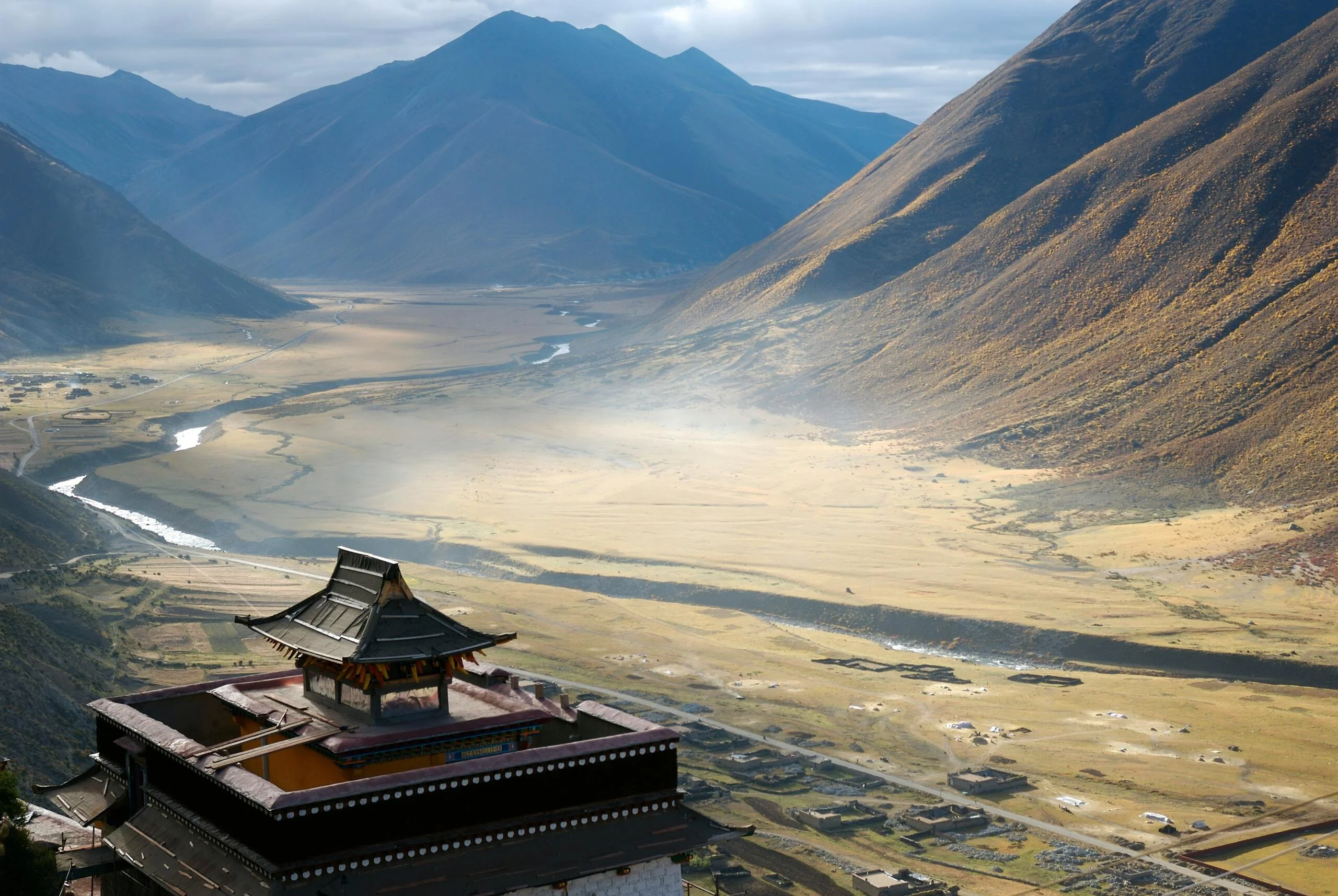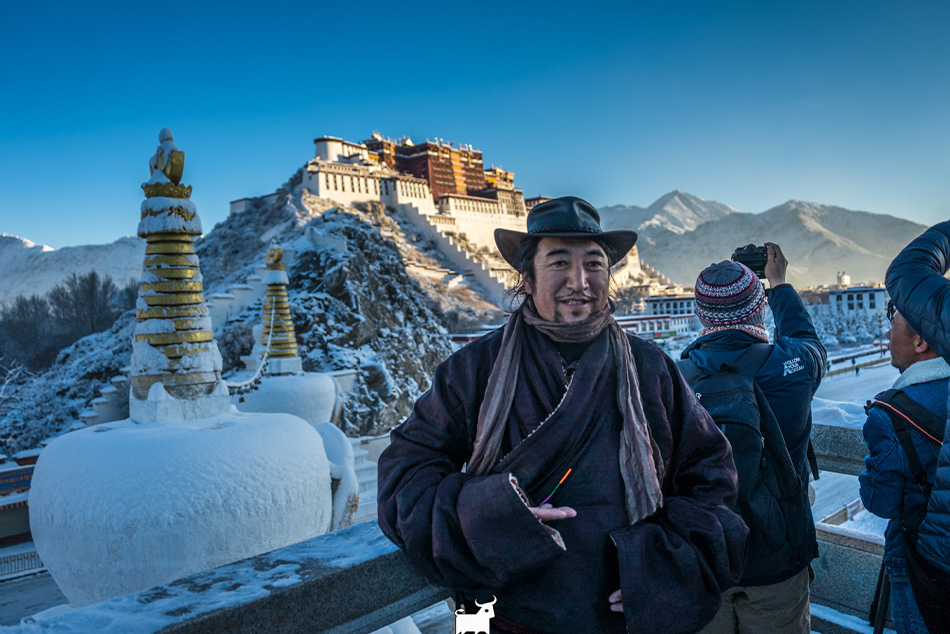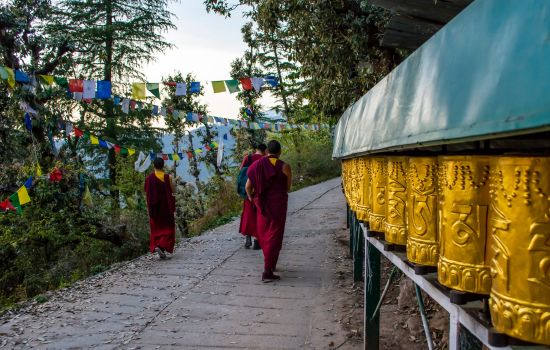Exploring Tibet: A European's Guide to the Land of Eternally Blue Skies

Introduction to Tibet
Geography and Climate
Nestled high in the Himalayas, Tibet is often referred to as the "Roof of the World" due to its elevated terrain. This region boasts breathtaking landscapes, from soaring mountains to vast plateaus. To illustrate its geographical marvels:
- Altitude: The average elevation is over 4,000 meters (13,000 feet) above sea level.
- Scenic Wonders: Iconic landmarks such as the majestic Mount Everest and shimmering lakes like Namtso offer unforgettable sights.
However, Tibet's climate can be surprisingly diverse. With a typical highland climate, expect cool summers and frigid winters. Day-night temperature fluctuations are common—so packing layers is essential for any journey to this enchanting land.
History and Culture
Tibet's rich history is woven with threads of unique traditions, spiritual beliefs, and indigenous customs. From ancient texts to modern practices, the culture here is vibrant and deeply rooted.
- Buddhism: The predominant religion, Tibetan Buddhism, has shaped numerous aspects of daily life and is symbolised by stunning monasteries dotting the landscape.
- Traditional Arts: The colourful Thangka paintings and intricate handicrafts reflect the nation’s artistic heritage.
Exploring Tibet is not just a journey through a region; it’s a profound experience that invites you to understand the resilience and beauty of its people and their heritage. Whether it’s through interactions with the locals or visiting historical sites, you’ll find endless stories waiting to unfold.

Planning Your Trip to Tibet
Visa Requirements
Before stepping foot in the enchanting land of Tibet, it's crucial to understand the visa requirements. Unlike many countries, travelling to Tibet involves a few additional steps:
- Chinese Visa: First, you’ll need a standard Chinese visa, which you can obtain from your local embassy.
- Tibet Travel Permit: Alongside the Chinese visa, you’ll require a special Tibet Travel Permit issued by a registered travel agency. This permit allows access to various regions within Tibet and is typically arranged when you book a tour.
Don’t forget to apply for these documents well in advance to avoid any last-minute challenges!
Best Time to Visit
Once the paperwork is sorted, timing your visit can significantly enhance your experience in Tibet. The ideal months to explore this mystical region are:
- April to October: This period showcases mild weather and clearer skies, perfect for trekking and sightseeing.
- August: One of the busiest months due to festivals like the Shoton Festival, where you can witness incredible local traditions.
On the flip side, visiting in winter can present challenges with harsh weather and road closures. If you're looking for a peaceful experience with fewer crowds, this could still be a time to consider, as long as you're prepared for the chill. Planning your trip thoughtfully allows you to soak in the beauty and spirituality of Tibet to the fullest, ensuring memories that you'll cherish for a lifetime.

Top Attractions in Tibet
Potala Palace
As you embark on your journey through Tibet, a visit to the iconic Potala Palace is an absolute must. Standing majestically over Lhasa, this UNESCO World Heritage Site once served as the winter residence of the Dalai Lama. Imagine wandering through its grand halls and ornate chapels, filled with centuries of history and spirituality. To highlight its significance:
- Architecture: The palace features a stunning combination of Tibetan and Chinese architectural styles, with over 1,000 rooms.
- Sacred Artifacts: Inside, you'll find incredible murals and relics, including the impressive tombs of past Dalai Lamas.
Make sure to take your time savouring the breathtaking views of Lhasa from the palace as you immerse yourself in its tranquil atmosphere.
Mount Everest Base Camp
If you're seeking adventure, trekking to Mount Everest Base Camp is an experience unlike any other. As you set your sights on the world's highest peak, you'll be captivated by the stunning vistas all around. This trek typically involves:
- Challenging Trails: Expect some rugged terrain, but the views along the way make every step worthwhile.
- Rich Sherpa Culture: As you navigate through charming villages, you’ll have the chance to interact with the warm-hearted Sherpa community, who will share stories about their lives in this breathtaking region.
Standing at Base Camp, gazing at Everest towering above, is a moment that resonates deeply within your soul, a true testament to the breathtaking beauty of Tibet.

Tibetan Cuisine and Local Flavors
Traditional Dishes
As you delve into the heart of Tibet, one of the most delightful aspects to discover is its traditional cuisine. Tibetan food is a reflection of the region's culture and environment, with an emphasis on hearty, warming dishes that sustain the body at high altitudes. Here are some must-try foods:
- Momos: These delicious dumplings, filled with meat or vegetables, are a popular snack. Whether steamed or fried, they're simply irresistible!
- Tsampa: This barley flour dish is a staple food in Tibet. Often mixed with tea, it provides energy for those traversing the challenging terrain.
- Yak Meat: A local delicacy, yak meat is often prepared in stews or barbecue and is known for its rich flavour and nutritional value.
Trying these dishes is not just about the taste—it's an immersion into Tibetan culture itself.
Tea Culture
While exploring Tibetan cuisine, you can't overlook the unique tea culture that accompanies it. Tibetan tea is far from ordinary; it's a simple yet comforting drink that warms you from the inside out.
- Butter Tea (Po Cha): Made from tea leaves, yak butter, and salt, this creamy concoction is energising and a daily staple for many Tibetans.
- Sweet Milk Tea: Another favourite, this tea is brewed with milk and sugar, providing a delightful treat that pairs perfectly with local pastries.
Sharing a cup of tea with locals can be a heartwarming experience, as it fosters connections and invites you into their world. Allow yourself to be swept away by the flavours and warmth of Tibetan hospitality!
Engaging with Local Communities
Homestays in Villages
One of the most enriching ways to connect with the soul of Tibet is through homestays in traditional villages. Staying with local families not only offers a unique glimpse into their day-to-day life but also fosters genuine connections. Imagine waking up to the aroma of freshly baked bread while hearing tales of the family's history:
- Authentic Experience: Enjoy homemade meals prepared with local ingredients and participate in daily chores. This hands-on approach provides invaluable insights into Tibetan culture.
- Learn Local Skills: Join in traditional crafts, such as carpet weaving or Thangka painting, and take home newfound talents you’ve picked up along the way.
These homestays can transform your journey from mere sightseeing to a meaningful experience filled with heartwarming memories.
Participating in Festivals
Another captivating way to engage with the local community is by participating in traditional festivals. Tibetans celebrate numerous festivals throughout the year, each showcasing their vibrant culture and deep-rooted beliefs. For instance:
- Losar (Tibetan New Year): This lively celebration involves feasting, rituals, and family gatherings, providing a joyous atmosphere filled with warmth and laughter.
- Shoton Festival: If your visit coincides with this remarkable event, you’ll be treated to breathtaking traditional opera performances and the grand unveiling of monumental Thangka paintings.
Attending these festivals allows you to witness the joy, spirituality, and togetherness of the Tibetan people firsthand. It’s impossible not to feel the contagious energy and spirit of community during these celebrations, leaving you with lasting memories of your Tibetan adventure.
Exploring Tibetan Monasteries
Sera Monastery
Your journey through Tibet wouldn’t be complete without visiting its famed monasteries, and Sera Monastery is a highlight you won’t want to miss. Nestled just outside Lhasa, this vibrant institution is renowned for its scholarly atmosphere and its stunning architecture.
- Debate Sessions: One of the most fascinating aspects of Sera is witnessing the lively debate sessions among monks. As they gesture passionately while discussing Buddhist philosophy, it offers a unique insight into their traditions, making for an engaging experience.
- Beautiful Gardens: The monastery is surrounded by serene gardens, providing a peaceful space for contemplation. Taking a leisurely stroll here is a perfect way to absorb the spiritual energy of the place.
Tashilhunpo Monastery
Next on your monastery exploration should be Tashilhunpo Monastery, the seat of the Panchen Lama, located in Shigatse. Its grandeur and rich history make it an essential stop.
- Imposing Architecture: The monastery features remarkable architecture with golden roofs and whitewashed walls, making it an impressive sight against the backdrop of the Himalayas.
- Buddha Statues: Inside, you’ll find one of the largest Buddha statues in the world, a sight that humbles and inspires contemplation.
Visiting these monasteries not only allows you to appreciate the intricate craftsmanship and spiritual significance of Tibetan culture but also offers moments of introspection and peace. Engaging with the local monks and their practices provides a wealth of knowledge that enriches your overall experience in Tibet.

Trekking and Outdoor Adventures
Kora Pilgrimages
When it comes to exploring the spiritual landscape of Tibet, embarking on kora pilgrimages is an extraordinary adventure. Kora, which means circumambulation, is a ritual journey around sacred sites and mountains. One of the most notable kora treks is around the majestic Jokhang Temple in Lhasa.
- Spiritual Journey: As you walk alongside local pilgrims, many performing prostrations, you not only witness their deep faith but also become part of a centuries-old ritual that honours the sacredness of the land.
- Scenic Views: The route is adorned with prayer flags, mani stones, and stunning views of the Potala Palace, making it an awe-inspiring experience for any traveller.
Completing a kora is more than just physically rewarding; it offers a deep connection to Tibetan culture and spirituality.
Hiking in Namtso Lake
Next on your outdoor adventure list is a hike around Namtso Lake, one of Tibet's most stunning natural wonders. As you set out on the trails encircling this high-altitude lake, prepare for breathtaking vistas.
- Surreal Landscape: Namtso is renowned for its striking blue waters and the backdrop of snow-capped mountains, making your hike feel like stepping into a postcard.
- Wildlife Spotting: Keep an eye out for local wildlife, including various species of birds that are often spotted near the lake.
Whether you choose to hike a short trail or undertake a longer trek, the ethereal beauty of Namtso Lake will undoubtedly leave you spellbound. Blending physical activity with the serene surroundings makes for an unforgettable experience in the heart of Tibet.

The Spiritual Side of Tibet
Buddhist Practices
Tibet is often considered the spiritual heart of Buddhism, and immersing yourself in its practices offers profound insights into this ancient religion. Whether you're a beginner or well-versed in Buddhist philosophy, there's something for everyone to experience.
- Daily Rituals: Observing the daily rituals of monks, such as morning chants and offerings, provides a window into the persistence of faith. The rhythmic sound of chanting resonates through the air, creating a calming atmosphere.
- Prayer Wheels and Flags: You'll find prayer wheels and flags sprinkled throughout the landscape. Every spin of a wheel or flutter of a flag sends prayers into the universe, symbolising the interconnectedness of all beings.
Engaging with these practices allows you to taste the essence of Tibetan spirituality.
Meditation Retreats
If you're seeking inner peace amid the vibrant spirituality of Tibet, consider participating in a meditation retreat. These retreats are often held in serene monasteries or secluded locations, providing the perfect backdrop for reflection and self-discovery.
- Guided Practices: Many retreats offer guided sessions led by experienced monks, introducing you to various meditation techniques and philosophies that enhance mindfulness.
- Natural Serenity: Imagine meditating at sunrise, surrounded by breathtaking mountains and the sound of nature. Such landscapes amplify the experience, making it easier to slip into a tranquil state.
Participating in a meditation retreat not only enriches your understanding of Tibetan Buddhism but also encourages personal growth and rejuvenates your spirit. It’s an unforgettable journey into the heart of Tibetan culture and spirituality that you won’t want to miss.
Navigating Transportation in Tibet
Train Travel
When it comes to exploring the vast and stunning landscapes of Tibet, train travel offers a unique experience that blends comfort and scenic beauty. The Qinghai-Tibet Railway is the highest railway in the world and provides an unforgettable journey to Lhasa.
- Breathtaking Views: As you ride the train, you'll be mesmerised by panoramic views of snow-capped peaks, lush valleys, and herds of yaks grazing on vast plateaus. Be sure to grab a window seat!
- Altitude Acclimatisation: The gradual ascent helps your body acclimatise to the high altitude, reducing the risk of altitude sickness. Plus, the comfortable interiors mean you can relax while enjoying the journey.
Many adventurers find this mode of transport not just a means to an end but a crucial part of their Tibetan experience.
Hiring Local Guides
Once you arrive in Tibet, hiring a local guide can greatly enhance your travel experience. These knowledgeable guides are invaluable in navigating the cultural nuances and hidden gems of the region.
- In-depth Knowledge: Local guides often have a deep-rooted understanding of Tibetan history, customs, and spirituality, offering insights that you might miss otherwise.
- Personal Connections: With their connections to the community, they can arrange unique experiences, such as home-cooked meals with local families or visits to lesser-known monasteries.
Utilising local guides not only enriches your journey but also contributes to the local economy, ensuring that your travels have a positive impact. This thoughtful approach aligns beautifully with the spirit of exploration that defines a trip to Tibet.

Shopping for Souvenirs in Tibet
Handmade Crafts
As your journey through Tibet comes to a close, don’t forget to take a piece of this enchanting land home with you. Shopping for souvenirs in the local markets is a delightful way to support artisans and acquire unique handmade crafts.
- Woollen Goods: Look for beautifully crafted woollen items, such as scarves and hats made from sheep wool or Yak fur, which are both warm and stylish.
- Jewellery: Tibetan silver and semi-precious stone jewellery make for striking souvenirs. Many pieces carry spiritual significance and reflect the rich cultural heritage of the region.
Exploring local markets not only allows you to find distinctive mementoes but also offers a glimpse into the daily life of Tibetan people.
Tibetan Thangka Paintings
One of the most cherished items you can bring back from Tibet is a Thangka painting—a traditional Tibetan art form that depicts Buddhist deities, mandalas, and scenes from Tibetan mythology.
- Cultural Significance: These intricate paintings often serve as educational tools for Buddhist teachings, making them both beautiful and meaningful.
- Variety in Styles: You’ll find a diverse range of styles, from large pieces for wall displays to smaller works perfect for your home altar or as gifts.
When purchasing Thangka paintings, consider buying directly from local artists. This way, you can ensure authenticity while also supporting the preservation of traditional Tibetan arts. Whether it's a woollen scarf or a stunning Thangka, each souvenir tells a story and will serve as a cherished reminder of your unforgettable Tibetan adventure.
